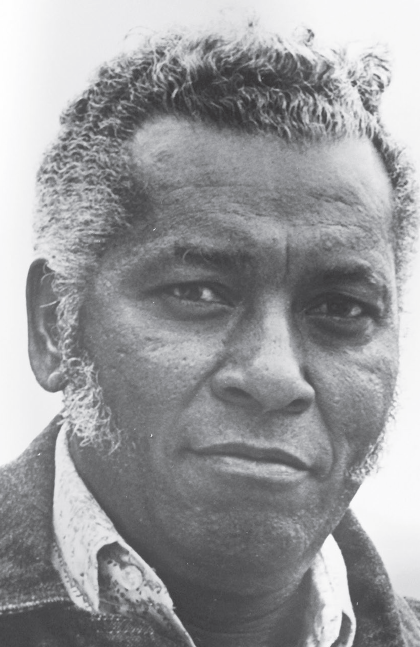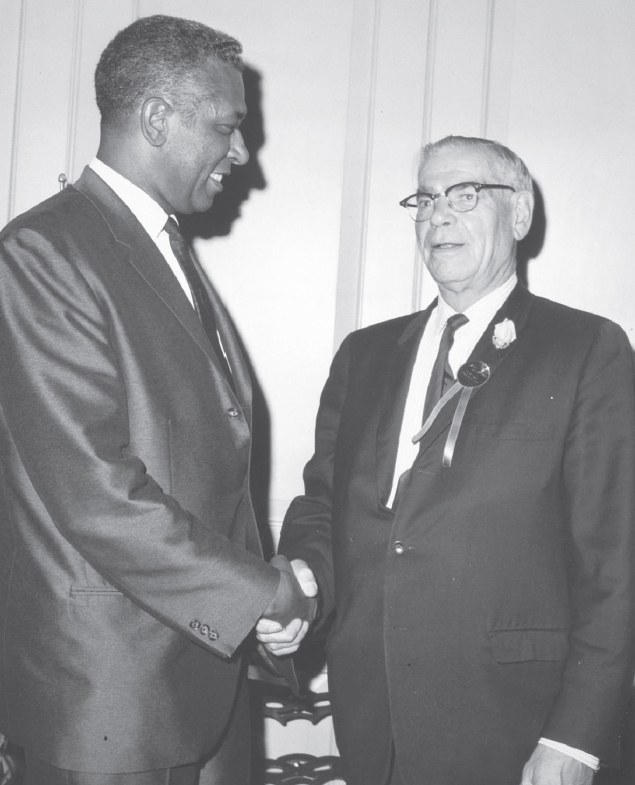Last updated: February 18, 2025
Article
Black History in the Last Frontier: Willard Bowman

William Egan Collection, University of Alaska Fairbanks, Rasmuson Library.

Willard Bowman Collection, University of Alaska Anchorage Archives and Special Collections.
Director of the Alaska Commission on Human Rights
Upon his arrival in Alaska, Bowman worked as a labor-management consultant with the territory during the 1950s. He later served in Governor William E. Egan’s administration in the early years of statehood as a Director of the Alaska Commission on Human Rights. He held that position from 1963 to 1970. As director, Bowman spoke candidly about the prevalence of racial discrimination in the newly admitted state and proposed solutions to address the inequities.

Bartlett, July 12, 1968.
Edward Lewis Bartlett Papers, 1938-1970. University of Alaska Fairbanks, Rasmuson Library.
Working on Behalf of African Americans and Alaska Natives
Bowman’s work with the Human Rights Commission led him to advocate on behalf of African Americans and Alaska Natives who faced discrimination in the workplace and when searching for homes. He documented how an area grocery store refused to hire qualified African Americans to positions of management during the 1950s and 1960s. He also provided evidence that city and state contracts bypassed qualified black and Alaska Native workers and skilled tradesmen in favor of whites. Financial institutions failed to extend loans on an equal basis as well. “Make no mistake about it,” Bowman boldly concluded in his report to the governor, “this is just as discriminatory as lunch rooms and hotels of the South.”Bowman also investigated what he described as conditions reminiscent of servitude among seal harvesters in the Pribilof Islands and the racist hiring practices among the oil industry on the North Slope.
Bowman’s research and experiences led him to develop the Citizens Council for Community Improvement (CCCI), a research group that acted under the broader authority of Governor Egan’s Human Rights Commission. These efforts brought greater awareness to the issues of segregation and discrimination in Alaska and positioned Bowman as a key advocate on behalf of those who had experienced discrimination.

Photo by David Reamer.
An Advocate in the State House
With his elevated profile, Bowman ran and was elected as a Democrat for the Alaska House of Representatives in 1970. As a representative, Bowman continued to give a voice to the people who had remained on the margins of Alaska.A Lasting Legacy
Bowman passed away in December of 1975, in the midst of his third term as a representative. Governor Egan memorialized Bowman with a proclamation that declared: “His contributions to the long-range welfare of the state will long be remembered.”The Anchorage School District dedicated an elementary school in his name in 1991. Willard Bowman’s contributions place among the thousands of perhaps lesser-known activists who fought for civil rights at local levels throughout the United States during the height of the civil rights movement from the 1950s through the early 1970s.
